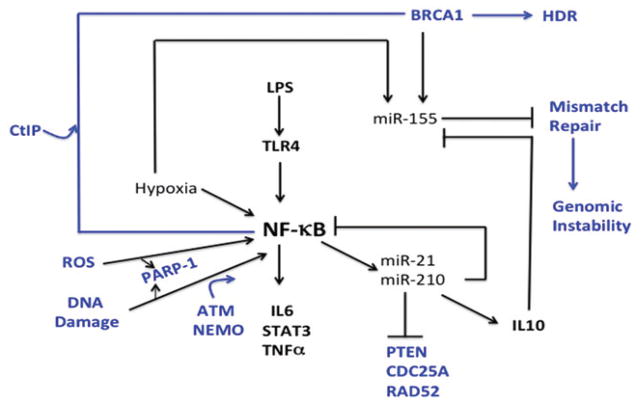Figure 1.
NF-κB and the interplay between DNA repair and inflammation. NF-κB is a master regulator of the inflammatory response. After activation through TLR4, several proinflammatory genes are activated, including IL6, STAT3 and TNFα, which has the potential to lead to a cytokine storm. NF-κB is also induced by DNA damage, ROS and hypoxia, leading to the expression of proinflammtory genes. Induction of NF-κB by DNA damage is regulated by ATM, a master regulation of the DNA damage response, and this occurs with assistance from NEMO. Induction of NF-κB also leads to the induction of miR-21 and miR-210, resulting in induction of IL10, and anti-inflammatory cytokine, but also downregulation of PTEN, CDC25A and RAD52, proteins that are involved in the DNA damage response. Not only does hypoxia induce activation NF-κB, but it also induces expression of miR-155, which downregulates mismatch repair, with the potential to lead to genomic instability. However, IL10, which is indirectly induced by NF-κB, has the capacity to downregulate miR-155. Of special interest for this review is the finding that NF-κB stimulates the CtIP-BRCA1 complex, thereby promoting homology-directed repair (HDR). (see colour version of this figure at www.informahealthcare.com/bmg).

